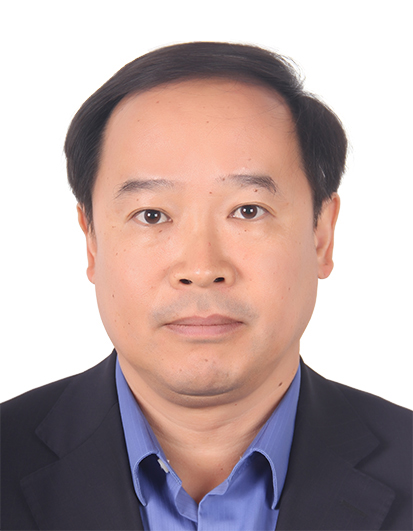The 6th International
Symposium on Thermal-Fluid Dynamics
(ISTFD 2025)


The 6th International
Symposium on Thermal-Fluid Dynamics
(ISTFD 2025)

Prof. Jun Yao
China University of Petroleum (East China),China
E-mail: yaojunhdpu@126.com
Bio
Prof. Yao Jun, is mainly engaged in scientific research and teaching in the field of Flow mechanics in Porous Media. He serves as the Director of Research Center of the Oil-Gas Flow in Reservoirs at China University of Petroleum (East China), the Leader of the "Changjiang Scholar" Innovation Team for Oil-Gas Field Development Engineering of the Ministry of Education, the Leader of the Excellent Innovation Team for Oil-Gas Field Development in Shandong Province, and the Leader of the Innovation and Intelligence Introduction Base for Oil-Gas Field Development Engineering of the Ministry of Education. In 2025, he was awarded the Lifetime Achievement Medal by the International Society for Porous Media; in 2024, he received the Meritorious Service Award from the International Society for Porous Media; in 2023, he was named the first Fellow of the China Petroleum Society; and in 2020, he obtained the highest individual awards from the Society of Petroleum Engineers (SPE), namely the Honorary Member and Distinguished Member.
His main academic part-time positions include: Member of the Discipline Appraisal Group for Petroleum and Natural Gas Engineering of the State Council Academic Degrees Committee; Meeting Review Expert for the Engineering and Materials Science Division and the Mathematical and Physical Sciences Division of the National Natural Science Foundation of China (NSFC); Member of the 7th Science and Technology Consultative Committee of the Ministry of Education; and Head of Professional Group of the Flow Mechanics in Porous Media for the Chinese Society of Theoretical and Applied Mechanics. He is a National Candidate of the New Century Talents Project and an Expert of the Shandong Taishan Scholar Climbing Program.
He has undertaken 3 key projects of the National Natural Science Foundation, 2 projects of the "973 Program", 1 major project of the "863 Program", etc. He has published 15 monographs (4 in English) and more than 600 papers indexed by SCI and EI, 32 papers in Chinese Science series journals, 25 papers in SPE Journal, and 23 papers in Acta Petrolei Sinica. His Google Scholar total citations reach 21,000, with an H-index of 72, and he was listed as a Clarivate Global Highly Cited Scholar in 2022-2023.He has won 1 Second Prize of the National Science and Technology Progress Award, 1 Second Prize of the National Technical Invention Award, 1 First Prize of the Natural Science Award of the Ministry of Education, 1 First Prize of the Science and Technology Progress Award of Shandong Province, 2 First Prizes of Scientific and Technological Achievements of the China Petroleum and Chemical Industry Federation, and 2 Second Prizes of the National Teaching Achievement Award.
Title
Theory and Methods for Multi-Scale, Multi-Modal, and Multi-Field Coupling Numerical Simulation of Unconventional and Fracture-Vug Carbonate Oil-Gas Reservoirs
Abstract
The oil-gas flow mechanics in unconventional and fracture-vug carbonate reservoirs is characterized by multi-scale, multi-modal, and multi-field coupling features, making its flow behavior and numerical simulation exceptionally complex. From a deep mechanical theoretical perspective, this study proposes an overall research framework involving multi-scale characterization of flow mechanisms, cross-scale correlation, multi-physical-field coupling modeling, and unified description of continuous-discrete media, forming a new research paradigm for modern oil-gas flow and numerical simulation.
Key Achievements:
1. Pioneering Digital Rock Technology: Based on artificial intelligence methods, we have developed innovative techniques for constructing multi-scale, multi-mineral shale digital rock cores and pore network models, and flow simulation methods, enabling precise acquisition of pore structure, permeability, relative permeability curves, and capillary pressure curves.
2. Advanced Numerical Simulation Methods: We created multi-modal, multi-field coupling numerical simulation methods and technologies for complex hydrocarbon reservoirs that account for micro-scale flow mechanisms. This includes the development of large-scale parallel numerical simulation software, with key performance indicators—such as simulation grids (10 billion), computation speed, and discrete fracture-vug processing capacity (100,000 fractures)—significantly surpassing current commercial software.
3. Machine Learning-Driven Optimization: We established methods for 3D development production optimization and fracture parameter inversion in complex hydrocarbon reservoirs using machine learning, enhancing the engineering application efficiency, reliability, and practicality of numerical simulation.